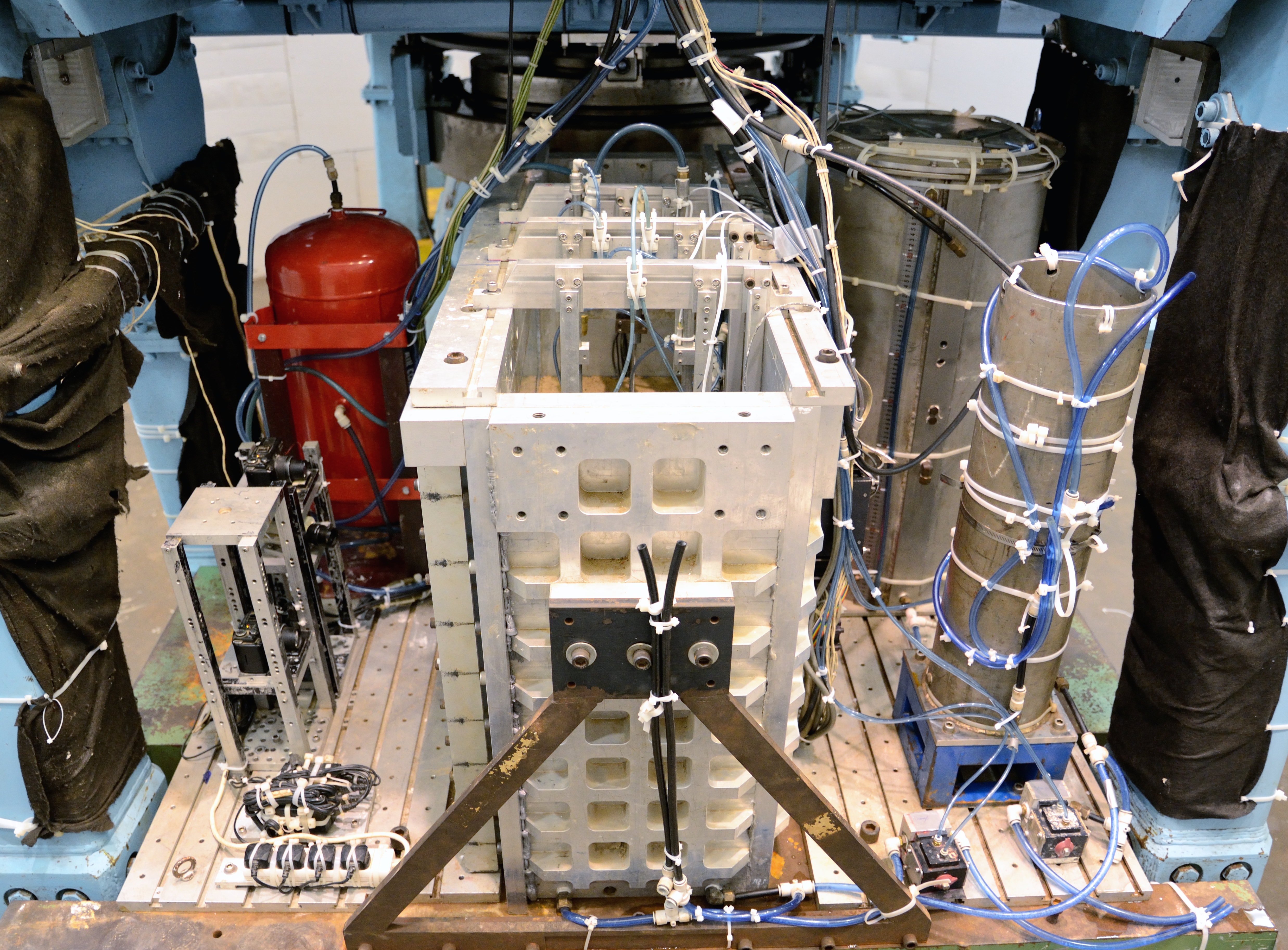Artificial root system
Soil bioengineering using vegetation has been considered an ecologically and environmentally friendly solution for stabilising shallow slopes, alternative to existing traditional engineering methods. Plant roots can generally reinforce the shallow soil through two mechanisms, namely mechanical reinforcement and hydrological effects of plant transpiration. The former relies on the mobilisation of root tensile or/and flexural strength to reduce the shear stress transferred to the soil in the vicinity upon shearing. The latter mechanism induces root-water uptake, which would reduce soil moisture content (or increase in soil suction), hence increasing the soil shear strength and reducing the hydraulic conductivity.
Modelling the mechanical root reinforcement has been attempted in previous centrifuge modelling, yet the modelling of the plant hydrological effect remains a challenge. Researchers in the Geotechnical Centrifuge Facility pioneers the use of an artificial root system that can realistically model both the mechanical and hydrological effects of plant roots of different geometries simultaneously (Fig. 1). The artificial root is made of cellulose acetate which has mechanical strengths highly resemble those of real roots and has a high air-entry value. The latter feature allows a negative water pressure to be maintained when a vacuum pressure is applied to the root. By carefully controlling the magnitude of the vacuum pressure, the amount of matric suction can be flexibly induced and controlled in a model slope. Figure 2 is a typical centrifuge model set up of a compacted soil slope reinforced by an array of artificial tap roots. The model setup also includes a vacuum chamber which allows different amount of vacuum pressure (hence plant-induced suction) to be controlled and also a water reservoir for controlling rainfall (Fig. 3).

Figure 1. Modelling of artificial roots of idealized geometries

Figure 2. A model soil slope reinforced by arrays of artificial tap roots in the centrifuge

Figure 3. Model package for applying vacuum to the artificial roots and water reservoir for applying rainfall
Journal publication
- Kamchoom, V., Leung, A. K. & Ng, C. W. W. (2014). Effects of root geometry and transpiration on pull-out resistance. Géotechnique Letters 4, No. 4, 330-336, https://doi.org/10.1680/geolett.14.00086.
- Ng, C. W. W., Leung, A. K., Kamchoom, V. & Garg, A. (2014). A novel root system for simulating transpiration-induced soil suction in centrifuge. Geotechnical Testing Journal 37, No. 5, 733-747, https://doi.org/10.1520/GTJ20130116.
- Ng, C. W. W., Kamchoom, V. & Leung, A. K. (2016). Centrifuge modelling of root geometry on transpiration induced suction and stability of vegetated slopes. Landslides 13, No. 5, 925-938, https://doi.org/10.1007/s10346-015-0645-7.
- Leung, A. K., Kamchoom, V. & Ng, C. W. W. (2017). Influences of root-induced soil suction and root geometry on slope stability: a centrifuge study. Canadian Geotechnical Journal 54, No. 3, 291-303, https://doi.org/10.1139/cgj-2015-0263.
- Ng, C. W. W., Leung, A. K., Yu, R. & Kamchoom, V. (2017). Hydrological effects of live poles on transient seepage in an unsaturated soil slope: centrifuge and numerical study. Journal of Geotechnical and Geoenvironmental Engineering 143, No. 3, 1-9, https://doi.org/10.1061/(ASCE)GT.1943-5606.0001616.
- Kamchoom, V. & Leung, A. K. (2018). Hydromechanical reinforcements of live poles to slope stability. Soils and Foundations 58, No. 6, 1423-1434, https://doi.org/10.1016/j.sandf.2018.08.003.
Conference Paper
- Kamchoom, V., Leung, A. K. & Ng, C. W. W. (2015). A new artificial root system to simulate the effects of transpiration-induced suction and root reinforcement. In Proceedings of the 15th Asian regional Conference on soil mechanics and geotechnical engineering 2, No. 4, pp: 236-240. Fukuoka, Japan: Japanese Geotechnical Society. https://doi.org/10.3208/jgssp.HKG-22.
Book
- Ng, C. W. W., Leung, A. K., & Ni, J. J. (2019). Plant-Soil Slope Interaction. Routledge: CRC Press/Taylors and Francis Group.
HKUST thesis
- Kamchoom, V. (2015). Effects of root geometry and transpiration on slope stability: centrifuge and numerical modelling. PhD thesis. Hong Kong University of Science and Technology.
- Yu, R. W. (2015). Centrifuge modelling of hydrological and mechanical effects of vegetation on slope stability. MPhil thesis. Hong Kong University of Science and Technology.